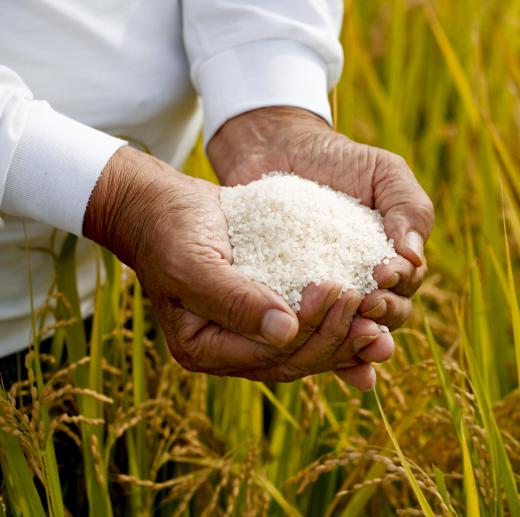Desiccants are substances which draw in moisture from their surrounding environment. There are a number of uses for desiccants, ranging from preparing chemicals in a chemical plant to protecting moisture sensitive items during shipping. Some common desiccants include activated carbon, sodium perchlorate, calcium sulfate, and silica gel. Around the house, salt and rice are both desiccants, and have been used for their desiccating properties by many cultures historically. Salt, for instance, was a key component in mummification in Egypt, used to draw water out of bodies to slow or stop the rate of decay.
Dryness is often a desired property. Many objects are allowed to dry through evaporation, but water loss slows as the evaporation reduces the moisture content of the object to that of the surrounding environment. Once an object is as moist as the surrounding environment, it cannot lose any more water, and this is where desiccants can come in. Enclosing the object in a container with a desiccant will allow it to lose more water as the desiccant sucks fluid out.

One common use for desiccants is in shipping, where things may be damaged if they become moist. Desiccants are included in the packaging to draw out water, and can be discarded once the objects arrive at their destination. These products are also used in dehumidifiers, bringing down the moisture in the air by drawing in water. Desiccant cooling systems take advantage of this trait to lower the humidity to make warm temperatures feel less extreme.

In addition to being drying, desiccants can also have other properties. Some are antifungal, antimicrobial, or antiviral, making them useful for a variety of applications. Many are not safe to eat, and are labeled accordingly so that people do not get confused. Some are treated with materials which will stain as the desiccants attract water, allowing people to see when the maximum amount of water has been absorbed.

In some cases, a desiccant bag or sachet can be refreshed by heating it to force it to release its water, allowing for reuse. Others are single use, and must be discarded once they have fulfilled their function. It is important to select a desiccant which is appropriate to the task, as people want to avoid corrosion, chemical reactions, and other problems which may occur if the wrong substance is used as a desiccant. Salt, for example, causes metal corrosion, which would make it unsuitable in settings where metal is present.
Ever since she began contributing to the site several years ago, Mary has embraced the exciting challenge of being a About Mechanics researcher and writer. Mary has a liberal arts degree from Goddard College and spends her free time reading, cooking, and exploring the great outdoors.

